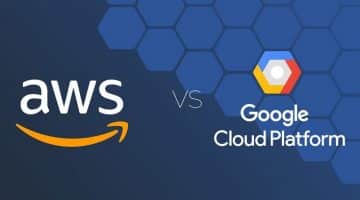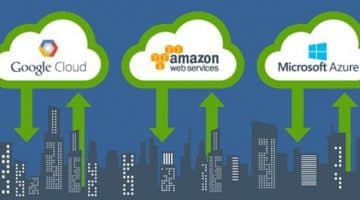Google’s Cloud Monitoring service provides better visibility into key metrics: health, performance, and uptime. Usable with Google Cloud and Amazon Web Services, it’s an essential technology for those who are running on a cloud-based infrastructure. With Google cloud monitoring, organizations can better control their applications, on-premise systems, hybrid cloud systems, and other components. Altogether, this creates a system with higher levels of observability.
Here’s what you need to know about Google Cloud Monitoring.
What is Google Cloud Monitoring?
Google Cloud Monitoring is a full-stack cloud monitoring solution. Once installed, Google Cloud Monitoring will monitor the organization’s cloud resources automatically. This includes critical metrics such as performance and uptime. If the system is not performing as it should, Cloud Monitoring data can be used to identify trends and react to issues. By using Google Cloud Monitoring, organizations can hopefully reduce their costs and improve their monitoring, as they will have a single, simple, consolidated system they can use. Ideally, this will ultimately lead to problems being fixed faster.
There are additional solutions that are built on Google Cloud Monitoring to make monitoring even more effective, and there is a Google Cloud Monitoring API to integrate it into other solutions. For those who are using Google Cloud or Amazon Web Services, Google Cloud Monitoring is an easy to deploy, out-of-the-box solution that can be customized and automated to suit any organization’s needs. This is especially true for those who need to manage hybrid environments and on-premise solutions.
How do you monitor with Google Cloud?
Google Cloud Monitoring comes with the Google Cloud system, in addition to being available with the Google Cloud Monitoring API. Developers can get started with the Google Cloud Monitoring system from within their Google Cloud interface; deployment is as easy as clicking a few buttons. Custom dashboards can be created to track specific metrics, and monitoring services can be integrated into other solutions such as Apache, MongoDB, and Elasticsearch.
While administrators and developers may need to design their cloud metrics and integrate their solutions, the product will run itself once it has been customized to the organization. Teams will be able to view their at-a-glance dashboards to identify issues and will be able to drill down to raw data to find out more. When incidents occur, those incidents will be automatically forwarded to the responsible parties, empowering them to take action as quickly as possible.
A significant amount of work has gone into making sure that Google Cloud’s technology, including Google Cloud Monitoring, is intuitive. It requires very little training to use, but it can still be customized as needed.
Why is monitoring important?
What are the benefits of Google cloud monitoring? Monitoring is critical for any organization that wants to improve its efficiency and uptime. Through better monitoring, developers can identify core problems with the infrastructure and issues that could be holding them back. Cloud monitoring makes it easier for organizations to look at their cloud system at-a-glance to identify bottlenecks and potential causes of concern. When downtime occurs, Google cloud monitoring can be used to troubleshoot and react faster.
Better uptime means better ROI, and Google Cloud Monitoring (and related solutions) can improve an organization’s bottom line.
Without monitoring, developers may not know why a system is failing, or may not know what measures they need to take to reduce their uptime. Unless real-time tracking is available, administrators may not even know when a system is down. But many monitoring solutions are incredibly complex because they have to be tied into every area of the system for better observability. Google Cloud Monitoring comes with out of the box integration for the most popular environments and applications — and because it’s part of the Google ecosystem, integration with Google Cloud itself is effortless.
How can you gain observability?
In addition to improving monitoring, Google Cloud Monitoring can improve observability.
Cloud Monitoring can be hooked directly into other applications and services to report back in-depth about how these applications are performing within the infrastructure. Rather than merely seeing the system as a whole, Google Cloud Monitoring will dig into how the applications are operating, which applications may be experiencing performance issues, and when. The more data available, the easier it is to hunt down these issues.
By processing raw data and reporting this data directly through the dashboard, Google Cloud Monitoring makes it easier for developers to find issues in even sprawling environments quickly. As infrastructures grow, this becomes even more important; organizations can scale upwards while still maintaining control.
Automating Google Cloud Monitoring
Much of the Google Cloud Monitoring service, such as its alerts, can be automated to reduce the amount of management time and administration spent on a network.
Developers can define their alerting based on specific parameters that concern them, so they only get the errors that they need to address. Alerts can be automatically sent through SMS, email, or other solutions like PagerDuty and HipChat, so responsible parties are immediately alerted when certain thresholds are met.
Cloud Monitoring can be integrated into a variety of systems and applications so that it can begin automatically reporting on their performance. And all these can be compiled into reports that make patterns and trends easier to understand. Since monitoring itself occurs out-of-the-box with Google Cloud Monitoring, there’s very little investment in the core infrastructure, and organizations can begin immediately reaping the benefits of the technology.
Google Cloud Monitoring is a robust and vital technology. Though there are other cloud monitoring and management solutions, Google Cloud Monitoring is notable for its wide range of support, including both Google Cloud and Amazon Web Services, as well as 150 standard application components.



